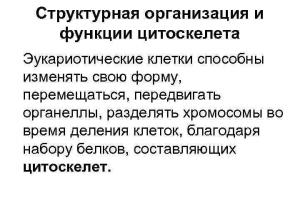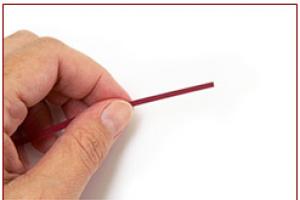Infrared heaters are the most diverse product in their category in terms of range and prices. Among all lines of models and manufacturers, you can find devices with different wavelengths, intended for domestic and industrial premises, powered by gas, electricity and diesel fuel. There are portable options that are placed on the floor, wall and ceiling. A number of brands also have built-in models.
Ceiling IR heaters have earned popularity because they do not take up usable space in the room. We will talk about them today.
What is an infrared heater
 Infrared lamps for heating a room on the ceiling are not fundamentally different from their floor and wall counterparts.
Infrared lamps for heating a room on the ceiling are not fundamentally different from their floor and wall counterparts.
The heating element induces infrared radiation, which is transmitted to objects within the reach of the rays: floors, walls, furniture. They absorb this radiation, heat up and release thermal energy to the air.
The wavelength that an element emits depends on the degree to which it is heated. The temperature it achieves varies from 300 to 1000 degrees, and the wavelength ranges from 50 to 0.76 microns. The dependence is well expressed: the higher the temperature, the shorter the wavelength.
Short waves have greater penetrating power, can dry out the skin and even lead to burns, but their intensity weakens with distance from the source.
The emitter can be made in the form of a carbon spiral, placed in a quartz tube, nichrome sealed in ceramics, a tungsten filament in a halogen lamp, metal films between layers of silicone and a conductor between layers of mica (micathermic elements). The presence of one or another housing on the conductor eliminates the burning of oxygen, which is very typical for the same elements without a housing (especially tungsten and nichrome). New generation ceiling infrared heaters are increasingly equipped with metal-ceramic heating elements.
Ceiling heaters have one important advantage: they do not take up space where there may be interior items or people. Being placed on the ceiling, they do not get underfoot, but they have a good coverage area, because the radiation is not obstructed by objects standing in the way.
Types of ceiling infrared heaters
Currently, there are three main directions in the production of this type of heating devices, and each of them has its own buyer. They are classified not so much according to the physical principles of operation, but rather according to their form, quantitative indicators and method of installation.
Gas heating appliances
 As you might guess, they run on gas. Most often, a gas cylinder of various release forms is connected, but there are also models designed (or allowing) to connect main natural gas. The gas burning in the chamber heats the radiant panel, and it transfers the heat further.
As you might guess, they run on gas. Most often, a gas cylinder of various release forms is connected, but there are also models designed (or allowing) to connect main natural gas. The gas burning in the chamber heats the radiant panel, and it transfers the heat further.
Such devices have many advantages: they heat up very quickly, do not generate dust, are great for outdoor use, but what would be an advantage for a cold workshop or a garage with a high ceiling will be a disadvantage for a room. These devices come in both short-wave (light) and long-wave (dark), but they all have high power, which can cause overheating and fire. Burning gas burns oxygen (1 cubic meter of methane requires 10 cubic meters of air for combustion), so the room where such heaters are located must be equipped with an exhaust hood.
Thanks to this combination of advantages and disadvantages, ceiling gas devices have found their buyer in production, but they are of little use for domestic use, except that at the dacha they can be hung in the yard. But among mobile models They have no competitors for such devices, and they are deservedly popular among tourists.
Among the ceiling models, it is worth noting such brands as Condor, Pacole, Roberts Gordon Blackheat, Norgaz, Ballu, and among Russian ones - Infra, SCHWANK.
If you purchased such a device for heating a workshop, workshop or other industrial premises, be sure to equip it with an exhaust hood and do not store explosives or flammable substances in it.
Electric heaters
This type of device is the most popular. Their merits cannot be ignored. First of all, this is:
- ease of installation;
- rapid heating of the room;
- absence of combustion products and oxygen burning;
- does not generate dust and does not emit odor.
 All this is somewhat offset by the high price and the need to find the optimal location, because the irradiation angle is about 90 degrees. Low ceilings make the coverage of the room minimal, and the buyer is often faced with the choice of where to hang the emitter - above the bed or above the desk.
All this is somewhat offset by the high price and the need to find the optimal location, because the irradiation angle is about 90 degrees. Low ceilings make the coverage of the room minimal, and the buyer is often faced with the choice of where to hang the emitter - above the bed or above the desk.
 Before choosing a heater of this type, pay attention to the shape of the reflector and the lower front surface. If the first is semicircular and the second is flat, then the coverage angle will be no more than 90 degrees. To heat large rooms, opt for models with a semicircular front, or even better, with a tubular radiator. The latter have coverage exceeding 120 degrees.
Before choosing a heater of this type, pay attention to the shape of the reflector and the lower front surface. If the first is semicircular and the second is flat, then the coverage angle will be no more than 90 degrees. To heat large rooms, opt for models with a semicircular front, or even better, with a tubular radiator. The latter have coverage exceeding 120 degrees.
Such devices are mounted on suspensions, but there are also models that can be mounted to the ceiling. They are equipped with good thermal insulation that prevents fire. You should take a closer look at the installation features in advance, since it is dangerous to build a device that is not intended for this purpose into the ceiling.
All ceiling heaters are equipped with a control unit, which is located on the wall. It is a box with a thermostat that allows you to regulate the temperature. The following brands of these products are available on the market: Almac, Ballu, Timberk, Peony, Resanta, NroClima, IkoLine, EcoLine, Bilux, Polaris.
Before buying such a device, evaluate the dimensions of the room where you will hang it. This is the area, ceiling height and the presence of various niches, if the room is not strictly rectangular. Also pay attention to the starting temperature and the one you want to achieve. This will determine the coverage and power with which you choose a product.
Warm ceilings
 This is a built-in version of the heater, which is a carbon heater in a film, which is why they are sometimes called infrared films. The film is mounted on a layer of heat-insulating material, most often rolled, connected to a thermostat and covered with a false ceiling. Usually this is lining, plasterboard or suspended tiled ceilings.
This is a built-in version of the heater, which is a carbon heater in a film, which is why they are sometimes called infrared films. The film is mounted on a layer of heat-insulating material, most often rolled, connected to a thermostat and covered with a false ceiling. Usually this is lining, plasterboard or suspended tiled ceilings.
This is a very economical and convenient heating method, and also safe: the film does not heat above 45 degrees. Disadvantages include:

Among the manufacturers it is worth noting the Korean Caleo, Heat, the Russian PSO-EVOLUTION (Zebra film) and NTK Innotech (Nirvana film), and the American Calorique.
Overview of individual models
The table shows the comparative characteristics of 1 kW devices from different manufacturers.
| Heating area, sq. m | Dimensions, cm | price, rub. | |
| Almac IK 11P | 10-20 | 133x16x3 | 3400 |
| Timberk TCH A5 1000 | 12 | 115x14x5 | 2800 |
| Ballu BIH-APL-1.0 | 10 | 136x13x4 | 3000 |
| Wester IH-1000 | 10 | 136x13x4 | 2500 |
| BISON IKO-K3-1000 | 16 | 162x15x4 | 2100 |
| Neoclima IRO-1.0 | 15 | 162x15x4 | 2600 |
| Zilon IR-1.0 | 20 | 163x12x4 | 2800 |
The price-quality ratio is observed in this product category. The price may increase if there are options, but brand recognition does not lead to a significant increase in price.
Chicken coops, as a rule, do not have central heating and many poultry farmers are faced with the fact that in winter their pets freeze their combs or paws or do not survive the winter at all.
For winter poultry farming, it is very important to have a well-insulated, windproof chicken coop, but with prolonged subzero temperatures outside, even in very well-insulated chicken coops, the temperature still drops to sub-zero, which is unacceptable.
An electric heater can help in this situation.
Almost the best option for a chicken coop are ceiling-mounted infrared heaters.
We list the main advantages:
. The heater located in the middle of the ceiling heats all surfaces evenly.
. Unlike convectors, oil and fan heaters, it does not create air circulation and, therefore, does not raise dust and hay.
. Since a ceiling infrared heater first heats the surfaces, the floor temperature will be about a degree higher than the air temperature. That is, the water in the drinking bowl will not freeze and the chickens will not freeze their paws. When using convective heaters, hot air will accumulate near the ceiling, and the floor temperature will be significantly lower and may be sub-zero.
. The likelihood of feathers, hay and bird waste products getting on the heater located on the ceiling is minimal. Therefore, they will not stain the heater, impairing its efficiency, and will not emit unpleasant odors when heated.
. The surface temperature of the ceiling infrared heater is 200-250 degrees. This is significantly lower than the temperature at which hay or fluff can ignite. They require a temperature of about 400 degrees to ignite.
. When placing the heater on the ceiling, it is easier to place the power wires in such a way as to prevent them from being accidentally damaged by birds.
. The offered ceiling infrared heaters are designed for a long service life. Working unattended throughout the winter is a normal and safe mode for them.
. Ceiling infrared heaters are economical.
Model selection. A chicken coop rarely requires the sophisticated appearance of a heater. The main characteristics are usually reliability and low cost. These requirements are met by Ecoline, Loriot, Almak heaters. They are reliable, have a service life of 25 years and are the most popular among our poultry customers. You can also use more expensive ceiling heaters designed for heating residential premises, but you will not get much benefit.

For a good insulated chicken coop, you should select heaters at the rate of 100 W per 1 square meter. In addition to the heater, you should purchase a thermostat. The heater itself does not have any adjustments; the temperature is set on a thermostat, which should be placed on the wall at a height of half a meter to one and a half meters in a place inaccessible to birds. The thermostat should be set to the required temperature (for a chicken coop, usually about 10 degrees) and it will automatically maintain it by periodically turning the heater on and off. You will also need electrical wires to install the heater. A wire should be drawn from the heater to the thermostat, and from the thermostat either to the input circuit breaker or to the nearest outlet.
You can use any thermostat that is used for heaters (that is, with a built-in temperature sensor).
Such a system can operate all winter in automatic mode without supervision. If you turn it off briefly and then turn it back on, the heater will continue to operate in automatic mode.
Alternative option. Panels. In addition to high-temperature heaters, lower-temperature STEP panels can be used to heat chicken coops. They have several advantages:
. STEP panels have a larger area, therefore heating the chicken coop will be more uniform.
. The surface temperature of STEP panels is about 70 degrees. If you accidentally touch it, you will not get burned.
. STEP heaters are only 2 cm thick and are mounted close to the ceiling. They can also be mounted on the wall, but ceiling placement is more effective.
. STEP panels have a high degree of dust and moisture protection (IP66), which allows direct ingress of water and operation in very dusty rooms.
Alternative option. Infrared film. Also a good option is heating the chicken coop using infrared film. The main disadvantage of infrared film is that it must be installed during the construction of the chicken coop and it is highly advisable to then cover it with a decorative coating, for example, hardboard. The best placement of the film is on the ceiling, but it can be on the floor, or you can combine both the floor and the ceiling. The total power of the infrared film is selected in the same way as the power of the heaters - at least 1 kW per 10 square meters.
Among the advantages of film are the invisibility of this type of heating and greater uniformity of heating, since almost the entire ceiling will have to be covered with film. The downside is that installation is much more labor-intensive and it is especially difficult to install it in an already built and used chicken coop.
Consumption. The consumption of a heating system for a chicken coop will primarily depend on the quality of the thermal insulation (insulation) of the chicken coop, secondly on the outside air temperature and only a third on the power of the heater. The reason is that a heater with the correct power does not work all the time. Depending on the air temperature in the chicken coop, the thermostat periodically turns the heater on and off and thus maintains the set temperature. If the outside air temperature drops, the heater is on for more time and off for less time, and, conversely, when the outside temperature rises, the heater is on for less time and off more.
On average, we can assume that consumption in central Russia in winter will be 20-30% of the rated power consumption of a properly selected heater.
For example, if you have a high-quality chicken coop with an area of 6 square meters, then a 600 W heater will suit you. Average consumption in winter will be approximately 150 Wh/hour or 3600 Wh/day or about 100 kWh per month. If the cost of electricity is 5 rubles per 1 kW, we get 500 rubles per month. On warmer spring and autumn days the amount will decrease. You also need to understand that the better you insulate your chicken coop, the less you will pay for electricity.
Infrared lamps. Infrared lamps refer to lamps that screw into a standard lamp socket and glow red or warm white when operating. Such lamps are quite popular in poultry farming, but we do not recommend using them for heating a chicken coop in winter.
Firstly, such lamps have a rather short resource. By design, these are ordinary incandescent lamps with only increased power. If such a lamp suddenly burns out, the chickens may freeze. And secondly, infrared lamps heat up to high temperatures (above 500 degrees) and hay or feathers caught on them can catch fire.
Such lamps are more suitable for heating chicks; they emit very intense heat, which can replace the warmth of a hen for the chicks.
Other heaters. We do not recommend using other heaters to heat chicken coops. In particular, we do not recommend medium and short-wave infrared (these are those that glow red during operation), convective-infrared, convectors, oil heaters, fan heaters, heat guns, most baseboards, as well as all kinds of ceramic, quartz and others.
Most of these heaters are less effective or do not provide any advantages compared to long-wave ceiling heaters or infrared film at a comparable price, and some can be simply dangerous in a chicken coop and cause injury to birds or a fire.
Review of the heater in the chicken coop
Heaters for dog houses and enclosures
There are 3 options for placing dogs and animals of similar sizes in rooms that require heating. It can be:
. Street booths
. Outdoor enclosures
. Aviaries in rooms that require additional heating.

Street booths. The most optimal option for heating a dog house is heating with infrared film. In this case, the film is installed on the ceiling or floor. For greater heating, it can be installed on all surfaces: floor, ceiling and walls. First, foil insulation is fixed to these surfaces, an infrared film is placed on it, and a decorative coating is placed on top (hardboard, plywood, lining). The big advantage of this option for heating the booth is that the dog cannot accidentally damage it with its claws or teeth. You can turn on such heating either manually before severe frosts, or install a thermostat. It makes sense to use a thermostat with a remote temperature sensor (usually these are used for heated floors). The thermostat is installed outside the booth in a sealed box or in a place inaccessible to precipitation, and the sensor is installed inside the booth and is protected from accidental damage by the dog. In this case, the system becomes automated and autonomous. All you have to do is choose the temperature that will be most comfortable for your dog.
You can also use STEP panels, fixing them on the wall or ceiling, or a STEP heating rug, placing it on the floor. The main thing is to take care of the mechanical protection of the supply wires. Just as in the case of infrared film, it is possible, and in some cases desirable, to install a thermostat.
It is impossible to say exactly how much power will be needed to heat the booth, since, in fact, the booth is not a completely insulated room. It has an open entrance that is directly connected to the surrounding air. Therefore, in the case of heating with film or panels, you can install as many as fit in the geometric dimensions. In severe frost, it’s still impossible to achieve heat in the booth. And the thermostat will save you from overheating during warming periods.
Conventional (non-panel) ceiling heaters are not suitable for heating the booth due to the high temperature of their surface. The dog may get burned. Other types of heaters are also not particularly applicable.
Outdoor enclosures. It is impossible to fully heat outdoor enclosures. Using waterproof panels or warm STEP rugs, you can only create local zones to which the dog can lean and better survive cold periods.
Outdoor heaters can be used for short periods of time. . We recommend using Heliosa models without a remote control. They are able to operate at high sub-zero temperatures and have a high degree of moisture protection. Such heaters should be installed at such a height that the dog cannot reach it. The heat from it will be like the warmth of the sun or a fire. It is not recommended to use such heaters for constant heating, since they are not designed for autonomous operation and have a lamp life of about 5000 hours.
Indoor enclosures. Indoor enclosures are characterized by the fact that they have a positive temperature and have a common roof. However, sometimes the temperature is still insufficient and additional heating is required. For this, as in the case of outdoor enclosures, STEP panels and rugs may be suitable, or you can, by analogy with a chicken coop, install a ceiling infrared heater. You should use a heater with a power of about 1 kW and install it at a height of 2-2.5 meters. Such a heater, of course, will not raise the temperature in the entire room, but it will create a local heating effect. The heat from it will not be as intense as from an outdoor heater, but it will be comfortable and not excessive.
Heaters for horses and cattle

In Russia, as a rule, horses are kept in stalls with a common corridor and roof, and cows and other cattle are kept in covered barns. Such premises are similar in structure to the version of indoor dog enclosures described above. The only difference is that horses and cows have tremendous strength and can damage any heater within reach, causing damage and possibly starting a fire.
Therefore, the heater should be placed beyond the reach of animals, and ceiling heaters are best suited for this.
For local heating, 2 kW heaters should be used, installed at a height of 3-4 meters directly above the animal. But ceiling heaters can also be used to heat an entire stable or barn. The total power of the heaters is selected based on the area and thermal insulation of the room. On average, this is usually about 1 kW per 10 square meters. In this case, the heaters are placed evenly over the entire ceiling area. For ceilings higher than 4 meters, 3 or 4 kilowatt heaters can be used.

Another problem horse owners face is drying their animals after washing. In stable conditions, horses can get colds after washing. To prevent this, a blanket is put on the horse, but it will be much better if an additional warming procedure is carried out using outdoor short-wave infrared heaters.
To do this, outdoor heaters are installed in the stall or in some place in the stable in such a way as to warm the horse from the sides. Usually 2-4 heaters with a power of 2 kW are used.
This heating dries the hair and increases blood circulation in the skin, which significantly reduces the likelihood of catching a cold and, like the effects of an infrared sauna, has a beneficial effect on the body as a whole.
To illuminate small areas, you can use infrared incandescent lamps, which have not yet found widespread use in everyday life, but have been used for quite a long time in poultry farming, livestock farming and greenhouse vegetable growing.
A traditional infrared (IR) heater is a standalone device, which at a minimum includes:
- a heating element;
- reflector,
- cable;
- automation or temperature control system;
An infrared lamp is structurally no different from a conventional halogen incandescent lamp and usually has a bulb whose glass is painted red. The power of infrared lamps starts from 125 watts, and household products are equipped with a conventional screw base for an electric cartridge of the “E27” form factor.
The only mandatory condition for using these emitters is– the cartridge for the IR lamp, due to the high operating temperature of the bulb and base, must be ceramic, not plastic.
The main advantage of lamps compared to emitters is their compactness and versatility. They can be connected in any room if it has regular electrical wiring, while infrared heating devices used in industry and agriculture require compliance with certain safety standards.
Models of IR emitters

Lamp IKZK 250W
The most widely used for infrared heating are lamellas made of pressed transparent glass, painted throughout their mass in different colors, denoted by the abbreviation “IKZ/IKZS/IKZK”.
The letter “Z” in the designation indicates that the inside of the bulb has a mirror coating. The most common are lamps with a red (“IKZK”) or blue (“IKZS”) bulb. The heating element in these lamps is a tungsten or carbon filament. If the lamp bulb is not painted (transparent) (“IKZ”), then it can be used not only for heating, but also for lighting.
A typical representative of this group of infrared emitters can be considered the IKZK 220-250 R127 lamp, which has the following technical characteristics:
- Electrical power consumption– 250 watts.
- Maximum heating temperature external surfaces – 500 C.
- Form factor– reflective (with mirror coating), with “E27” base.
- Infrared range 3.5-5 microns.
- Resource (mean time between failures)-6.5 thousand hours.
- Supply voltage 220 volt.
In addition to conventional infrared lighting and heating devices, specialized products are also produced, the effect of which is primarily aimed at heating a limited area or volume.
These include:
- Ceramic infrared lamps“ECZ/ECX” with a heating element made of nichrome or fennel, which is enclosed in a ceramic housing (manufacturers “Elstein”, Germany, “Ceramicx”, Ireland).
- Infrared emitters with tubular halogen heating element"ECS/ECP/ECH", in a quartz glass case and a rheostatic wire heater.
- IR illuminators, in which various types of IR lamps or emitters are installed, and the device itself allows you to direct the flow of IR radiation in the desired direction.
Selection and Application

The radiation of infrared devices with a glass bulb is closest to the solar spectrum, only it lacks the ultraviolet component.
The choice of one or another type of emitter depends on:
- Purpose of the heated room(bedroom or children's rooms, garage, greenhouse) and the function performed (simple heating, raising young animals and poultry, cultivating greenhouse crops).
- Purposes of use– temporary heating of a local area or constant maintenance of temperature at a given level.
- Heating object– people, animals, plants, technology.
The power of the device can be in the range of 125-500 watts and is calculated according to the amount of additional heat required at the place of use. Typically, IR emitters are used for local heating at the rate of 1 kilowatt per 10 square meters. To heat large areas, several interlocking sources are used.
Medical uses of IR lamps
 Today, when self-medication is quite common, medical devices with IR lamps can be found in most pharmacies and institutions that sell medical equipment. These devices are used for home phototherapy sessions.
Today, when self-medication is quite common, medical devices with IR lamps can be found in most pharmacies and institutions that sell medical equipment. These devices are used for home phototherapy sessions.
It is generally accepted that IR radiation, acting on a local area of the skin, improves its blood supply and accelerates metabolism in the subcutaneous tissues, which contributes to a general improvement in well-being.
- Treatment of colds(acute respiratory) diseases, in case of complications with rhinitis or tonsillitis, as well as for the treatment of otolaryngeal diseases.
- For pain relief and muscle spasms.
- Treatment of joints when pain of arthritic etiology occurs.
- To reduce high blood pressure and prevention of stroke and heart attack.
However, when using this type of device at home, you need to remember certain precautions. Some diseases do not allow the use of infrared radiation not only as a therapeutic, but also as a prophylactic agent. They are contraindicated for patients with cancer, tuberculosis and the presence of a purulent inflammatory process.
The use of infrared radiation is not recommended for women during pregnancy, patients or those suffering from chronic pulmonary or heart failure. It is strictly forbidden to use infrared phototherapy while taking immunomodulators and hormonal drugs.

Beurer IR lamp
For medical use as a local heater or during phototherapy sessions, the most common are various models of IR devices:
- Beurer (Germany), costing 1100-2900 rubles (depending on the power of the emitter and the availability of adjustment).
- "Medisana IRL" (Germany), which can be bought for 2000-2150 rubles.
- Spotlight IR emitter “Sanitas SIL45” (Germany) with a power of 3000 watts, which has a built-in timer and power regulator (price about 3000 rubles).
- The well-known “grandmother’s” reflector “Clear Sun”(“Minina”), which does not have any special design refinements, in which blue IR lamps are used - the price of this “miracle” is 1300-1700 rubles (including the emitter).
According to user reviews, the medical use of IR emitters is quite effective.
Below are the most interesting statements about the benefits and effectiveness of these devices:
Anna-Your muse (city not specified)– “...treatment with the Beurer IL30 IR Lama helped me get rid of acne. Don’t be sorry for the money spent; given its high price, it will definitely come in handy more than once in the future.”
"gizmal" (Astrakhan)– I was sorting out the closet and came across a “Minin” reflector (with a blue lamp), long forgotten and not used. And then my husband got an earache... After three days of warming up, everything went away. The reflector is easy to use, and the blue lamp costs pennies.”
"Devushka" (city not specified)– “...I was treating a skin rash under such a lamp in the hospital. But it is not small, but big - the Sanitas SIL45 floodlight). It disinfects and dries the skin well – it helped!!!”
Household use
 Infrared lamps and emitters are successfully used in rural farmsteads for heating young poultry, piglets, lambs and kids. In addition to heating, these devices have a positive effect on the health of newborn animals and excellently dry the bedding.
Infrared lamps and emitters are successfully used in rural farmsteads for heating young poultry, piglets, lambs and kids. In addition to heating, these devices have a positive effect on the health of newborn animals and excellently dry the bedding.
When using the product “IKZK-250” in a pigsty, when raising piglets, the following scheme is recommended:
- For keeping baby pigs warm from birth to 7 days, the heater lamps are suspended at a height of 0.5 meters from the floor.
- Aged piglets 2-3 weeks, the height is increased to 0.75 meters.
- Upon reaching three weeks of age, the device is placed at a height of 1 meter, while the heating area of one lamp is 1 square meter.
To heat chickens and ducklings, it is advisable to equip the emitter with a simple power regulator (a Chinese model can be found for 150-200 rubles).
Typically, for heating poultry, Russian electrical appliances “IKZK 220-250 R127” are used, which can be purchased for up to 200 rubles, or German ones – “OSRAM SICCA 250W E27” costing about 500 rubles.
In rural areas, where power surges and surges are common, it is advisable to provide power to IR heaters (to increase their service life) through the UZL 300/500 protective device
When using IR devices for heating animals, certain rules must be followed, which will not only improve the conditions for their cultivation, but will also make the process safer:
- Temperature in the heating zone should be equal to 25-32 degrees, it is adjusted either by changing the height of the suspension of lighting fixtures or by adjusting the power of the infrared light source itself.
- Frequent switching on and off is not recommended lighting devices.
- The surface of the flask under livestock conditions, should be wiped periodically, otherwise the settled dust will lead to overheating of the device, and it will burn out.
The effectiveness of using IR heaters in livestock and poultry farming is not only scientifically proven, but also confirmed by numerous reviews:
Sergey_Krym (Feodosia)– “...the IKZK-250 light bulb has been in service for three years now. Like new, although I use it all the time.”
Nadezhda (Krasnodar region, Crimean region)- “...I bought some kind of 500-watt light bulb in the department where “everything is for snakes and turtles.” It heats great, but is it good for chickens?”
"Lulu" (Buryatia)- “...I heat the chicken coop with a thermal red light bulb (it’s called “IR - 250”)...the heat is light, the light is not bright, but soft, warm and soothing.”
Use in greenhouse crop production

To heat a small greenhouse, you can also use infrared lamps located at a distance of 1.5-2 meters from each other.
When growing seedlings, as they grow, it is advisable to raise the lighting fixtures to different heights. The advantage of this method is the combination of heating and lighting.
Application in the repair industry

When performing body repair work, they are often used, and often of the floodlight type. The advantage of these devices is the ability to change the angle of incidence of the light flux and the distance from the IR lamp to the surface of the painted part.
This technology came into repair production from the assembly lines of the Audi AG and Bayerische Motoren Werke AG (BMW AG) factories, where drying chambers are equipped with lamp emitters.
An infrared lamp and lamp are light sources that emit heat in the direction they are pointed at. Operating principle: when connected to the electrical network, the lamp filament is instantly heated and, due to the special design of the bulb, infrared radiation is generated, the temperature of which can reach 75 0 C.
Infrared lamps are classified according to the following criteria:
- application (medical, heating, drying);
- depending on the wavelength of light (short-wave, medium-wave and long-wave);
- designs (incandescent, halogen);
- shape (regular, in the form of tubes);
- light (red, white, blue);
- power (from 50 to 500 W).
 The scope of application of such lamps is extensive. They can be used to heat small areas (kiosks, balconies, winter gardens, living spaces, offices, etc.). They are also used for medical purposes. An infrared lamp for treatment has found application for colds, pain in joints and muscles, and lowering blood pressure. Such lamps can be bought at a pharmacy. In paint shops, repair shops, and auto repair shops, infrared radiation lamps are sources that speed up the drying of paints, enamels and varnishes and make coatings of higher quality.
The scope of application of such lamps is extensive. They can be used to heat small areas (kiosks, balconies, winter gardens, living spaces, offices, etc.). They are also used for medical purposes. An infrared lamp for treatment has found application for colds, pain in joints and muscles, and lowering blood pressure. Such lamps can be bought at a pharmacy. In paint shops, repair shops, and auto repair shops, infrared radiation lamps are sources that speed up the drying of paints, enamels and varnishes and make coatings of higher quality.
Agriculture is an industry that cannot do without infrared lamps. In livestock and poultry farming they are used for heating and raising young animals. Infrared illumination not only heats, but also increases appetite in calves, piglets, foals, and chicks, which increases weight gain. In addition, the young body of animals and birds is better able to resist diseases. In a brooder where chickens or other poultry are raised, infrared radiation also dries the hay, which improves hygiene. Directed heat provides the required temperature conditions. Installing such heat and lighting sources in greenhouses and winter gardens promotes crop growth, because allows you to adjust the heating height of seedlings and seedlings.
Design
 A regular incandescent lamp and an infrared lamp have much in common. Structurally, the IR light source is a flask with a mirror amalgam applied to its inner surface. Inside the red, blue or white glass body there is a tungsten filament. The hermetic housing is filled with gas (a mixture of nitrogen and argon in various proportions). For connection to a power source, the heat and light emitter is equipped with an E27 ceramic socket.
A regular incandescent lamp and an infrared lamp have much in common. Structurally, the IR light source is a flask with a mirror amalgam applied to its inner surface. Inside the red, blue or white glass body there is a tungsten filament. The hermetic housing is filled with gas (a mixture of nitrogen and argon in various proportions). For connection to a power source, the heat and light emitter is equipped with an E27 ceramic socket.
Powerful products have protective fittings that protect the source of heat and light from moisture and overheating and can be used in dusty and damp rooms.
Low-temperature models, which include long-wave products, are ideal for use in private homes and apartments, medium-wave models heat the areas of kiosks, shops, stalls and other medium-sized premises, and short-wave models warm up production workshops, warehouses and large premises.
Advantages
The main advantages of IR radiation sources include:
- small dimensions;
- possibility of use for different purposes;
- high efficiency;
- instant warm-up;
- noiselessness;
- they do not burn oxygen;
- quick installation;
- environmental friendliness;
- safety.
Main settings
When choosing a lamp, you need to pay attention to the following indicators:
- lamp type;
- power;
- cartridge type.
 Infrared lamps will replace expensive equipment for drying, treatment and heating. You just need to choose the right source of light and heat. The best products are considered to be from General Electric (USA), Philips (Netherlands), Osram and Sylvania (Germany), which are world leaders in the production of lighting equipment. These companies produce their lamps using high-tech equipment from high-quality materials in compliance with production technology. Therefore, their products can last 6,000 hours or more. Customer reviews indicate that the most popular models are: Rubystar, Thera Red and Halotherm from the German company Osram, Ir from Sylvania.
Infrared lamps will replace expensive equipment for drying, treatment and heating. You just need to choose the right source of light and heat. The best products are considered to be from General Electric (USA), Philips (Netherlands), Osram and Sylvania (Germany), which are world leaders in the production of lighting equipment. These companies produce their lamps using high-tech equipment from high-quality materials in compliance with production technology. Therefore, their products can last 6,000 hours or more. Customer reviews indicate that the most popular models are: Rubystar, Thera Red and Halotherm from the German company Osram, Ir from Sylvania.
Video about infrared lamps








